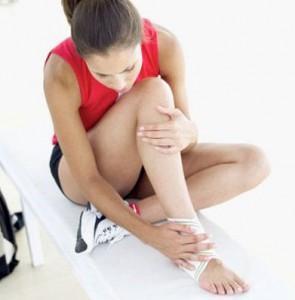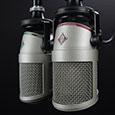
Running has increased in popularity. It has also increased with the average age of five years in both males and females since 1980 to 2011. The number of people finishing a marathon has gone from 1 percent of the population to 5 percent in just a few years. In 2008, more than 14 million runners completed at least 100 days running. But with the interests and increases in running, there are always possibilities for injuries. On average there are 4 injuries per 1,000 hours of running. This means that if you are running 5 to 10 hours per week, you could potentially get 2 injuries per year. This article is dedicated to eliminating or reducing them in your running journey. Most injuries occur when you are a new runner, increase your mileage more than 10 percent in a given week, or are coming back from an injury. Adding distance, using uneven work, speed, running up hills, and interval training are other reasons runners get hurt. The lower body of the hips, knees, legs, and feet are more commonly injured. In the next paragraph, common injuries will be addressed.
Blisters
Blisters are small pesky bumps caused by damage to the skin as well as too much moisture from socks and shoes. They are also caused by tight shoes or a foreign object that is lodged in the shoe. It is recommended that you do not pop them, and change your socks and shoes if possible. Changing your gait and watching running surfaces can eliminate blisters.
If it is possible to leave a blister alone and keep it clean and wrapped loosely. Only pop it if it is absolutely necessary, use a sterile needle, and make sure your bandage is continually dry and clean. Moleskin helps inhibit blisters, and gauze is loose-fitting bandages that are great to add to blisters to keep them clean. Use soap and water and a topical ointment such as polymyxin B or bacitracin, and never use alcohol on a blister.
Side Stitches
 Side stitches are caused by known and unknown sources such as electrolyte deficiencies and skeletal muscles imbalances. Side stitches are officially known as exercise-related abdominal pain (ETAP). It can be caused by too much fluid or food during a run. It could be the result of tugging on the diaphragm by the ligaments that attach to the internal organs, such as the liver, to the muscle. The organs naturally bounce up and down on the elastic ligaments as we run or jump. Most episodes of side stitch come from shallow breathing during exercise. While you exercise, try to breathe deeply and slowly, expanding the belly as well as the upper chest. Another effective method is to belly-breathe or grunt-exhale. Making a grunting sound as you exhale seems to help relieve side stitch, possibly because it forces the diaphragm out of its taut “exhale” position. Massage the area and be sure to be taking fluids with sodium and plenty of simple carbohydrates such as gels, Gus, and bloks. Being out of condition and exercising too intensely causes you to breathe quickly––and more shallowly. Build your intensity slowly over the course of several weeks and you will help eliminate or lessen side stitches.
Side stitches are caused by known and unknown sources such as electrolyte deficiencies and skeletal muscles imbalances. Side stitches are officially known as exercise-related abdominal pain (ETAP). It can be caused by too much fluid or food during a run. It could be the result of tugging on the diaphragm by the ligaments that attach to the internal organs, such as the liver, to the muscle. The organs naturally bounce up and down on the elastic ligaments as we run or jump. Most episodes of side stitch come from shallow breathing during exercise. While you exercise, try to breathe deeply and slowly, expanding the belly as well as the upper chest. Another effective method is to belly-breathe or grunt-exhale. Making a grunting sound as you exhale seems to help relieve side stitch, possibly because it forces the diaphragm out of its taut “exhale” position. Massage the area and be sure to be taking fluids with sodium and plenty of simple carbohydrates such as gels, Gus, and bloks. Being out of condition and exercising too intensely causes you to breathe quickly––and more shallowly. Build your intensity slowly over the course of several weeks and you will help eliminate or lessen side stitches.
Muscle Cramps
Muscle cramps occur often when a runner has had fatigue and also might be dehydrated. Some people are more prone to muscle cramps. Experts suggest ease into workouts in the heat. Additionally, carefully plan your fluid, electrolyte, and carbohydrate intake to help avoid or delay muscle cramps. Hydration should be monitored with plain water and electrolytes. You should weigh at the beginning on a run the same as the end. If you are not drinking enough, you will weigh less; and if you are drinking too much, you are drinking weight more. Also, make sure you are getting enough simple carbohydrates, so when your store of glycogen is depleted, you still have the energy to run on. Having a planned Gu gel or shot blok 60 minutes into the long distance running will help combat the depleted glycogen stores you experience 60 to 90 minutes into the run. Try a walk/run method where at various intervals you take a break from running. Heat affects running so consider running slower in the heat.
Achilles Tendonitis
The Achilles Heel is the hick muscle of tissue tendon that attaches the calf muscles to the heel bone or the back of the foot. This is an injury of excessive use, inflammation, overstretching, and strain on the Achilles’ tendon. It is caused by poor running posture, tightness in the calf, overpronating the feet, too fast running, and not enough heel support.
There are many ways to avoid injury: Avoid increasing mileage over 10 percent in a given week and overtraining; warm up gradually before your run. Strengthen your leg muscles, avoid high heels, and exercise over flat, straight surfaces––also stretch. Avoid uneven terrain while running. The way to treat it is to rest, icing the area, calf strengthening and stretching, and cortisone shots. Pool running and icing several times a day is also helpful.
Shin Splints or Medial Tibial Stress Syndrome
Shin Splints are also called medial tibial stress syndrome and occur mostly in a new runner, someone overweight, or an individual who adds to their training mileage too quickly. It often occurs in runners with flat feet. It is about over-abuse of the tibia. It is a pain that occurs in the front or inside of the lower leg along the shin bone ( tibia). It is called periostitis and is inflammation of the periosteal muscle. This is also caused when there is a large amount of downhill running or too long of a stride. Runners have an impact on their forefoot, creating stress on posterior compartments. Joggers have an impact on the heel, creating stress on anterior compartments.
There are two types of shin splints. They are also referred to as a variety of pain and injuries such as any pain in the shin area. The worst cases turn into a stress fracture or fracture of the tibia, and in less serious cases the shin area may be tender and inflamed; pain lessons a few miles into the run. Experts suggest rest, ice, and ibuprofen, making sure it is not of the most serious matter of a stress fracture.
Stress Fracture
This is a small break or crack in the bone that causes pain but that is not always revealed through an X-ray scan. It causes pain and discomfort; and stress fracture can occur in the femur, tibia, ankle, and foot. It often occurs when you are pushing yourself too hard or not getting used to a repetitive motion activity. Pain gets worse with activity and improves with rest. It is essential not to run for at least eight weeks and start up slowly after the advice of a doctor.
Iliotibial band syndrome
Iliotibial band syndrome is also called wobble injury. It affects the band alongside and outside the knee outside of the hip to the knee, occurring mostly at the beginning of a run. It is a female issue and also affects runners who are overweight. It occurs during long runs and on surfaces that are uneven. It occurs at the hip and causes great trochanteric bursitis with local tenderness, and pain with walking or running; it further occurs on inclines. There is a pain at night and when accomplishing activities of daily living. This occurs when the ligament thickens and runs through the knee bone, causing inflammation; distance increases quickly. It feels like someone is stabbing you in the side of the knee when you run, especially downhill. Treatment includes decreasing the amount of exercise, ibuprofen, heat, stretching the IT Band prior to exercise, and icing the area after activities. Cross training or changing up your running surfaces help with lessening the effects of IT Band pain. It is important to be running level without a lot of pelves sliding side to side. Weak abdominals and hips contribute to the problems. Foam rolling, icing, massaging the infected area, and cross training with other activities can strengthen the hip.
Patellofemoral Pain Syndrome or Runner’s Knee
This is an overuse injury when the kneecap is out of alignment. The cartilage of your knee, as the years go by, wears down. It makes up about 40 percent of running injuries. There is a strong pain around and under the kneecap. It is affecting women and during certain biomechanics––also people who over-pronate or have high arches as well as others who are slower runners. Running is recommended to be halted for three months. And under a doctor’s guidance, non-impact aerobics may resume after six weeks of rest.
Plantar Fasciitis
Plantar fasciitis is a very common foot ailment. What starts as a dull ache skyrockets to pain whenever they do any exercise such as walking or running. This condition is more than just a pain in the heel. This pain is often most present when someone first awakens or has sat or stood in one place for an extended period of time. The plantar fascia is a thick broad band of fibrous tissue that runs along the bottom of the foot. It is attached to the heel bone (calcaneus) and goes out to the toes (metatarsals) of the foot. This tight band of tissue is elastic and acts like a bowstring to maintain the arch of the foot. As person ages, this band becomes less flexible. Plantar fasciitis is a type of overuse injury caused by micro-tears to the plantar fascia. It is present with inflammation of the plantar fascia and often feels like sharp knives digging into your heel. What is thought to be the pain in the ball of your foot originates in the middle of the bottom of your foot? It comes from overuse of the foot through sports that involve the pounding of feet, running, jumping, or walking. A sudden change of more than a 10 percent increase in activity, wrong shoes, worn-out shoes, an increase in weight, pregnancy, and arthritis can increase plantar fasciitis. Even with plantar fasciitis, many people have found relief. Experts suggest that athletes take complete rest from their particular activity until their feet do not hurt. People with flat feet and high arches have found that with the use of insoles, heel cups, or doctor-prescribed orthotics, they are still able to run marathons and ultra marathons, or hike long distances with great success. Medical interventions include using ice, topical ointment, and a pill, or capsule muscle pain reliever.
There are many things you can do to avoid injury. First of all, be aware of your fluids of both water and electrolyte intake fluids. Realize that you should ingest carbohydrates in long-distance events lasting 30 to 45 minutes with 100 to 200 calories. Races lasting more than 90 minutes mean that you have depleted your carbohydrate stores. Every three weeks that you are training, aim for a taper week. Even accomplished marathoners should aim to wait at least three weeks to three months between marathons. When a new or unfamiliar pain comes on, take it seriously and rest. Don’t hesitate to visit a running doctor for any pain that lasts longer than a week. Make sure you are wearing clothing that breathes and keeps you dry, and that will allow you to move freely. Be ready to adjust it quickly to keep gait and movement flowing. Avoid extensive hill running and make sure you are running on even surfaces. Cross-aerobic training and a basic strengthening program are essential to any runner. Yoga or a stretching class is a plus. With proper care and planning, you can help lessen the instances of running injuries.
Reference:
Dreyer, Danny. ( 2009) Chi Running. (New York: New York. Simon and Schuster) Galloway, Jeff. (2006)
Running: Test Yourself. Olten, (New York: Meyer and Meyer) Galloway, Jeff. (2008) Running Until You Are 100. (Olten, New York: Meyer and Meyer) Galloway, Jeff. (2010) Running Injuries. (Olten, New York: Meyer and Meyer)
Cramps http://beta.active.com/articles/how-to-deal-with-cramping-during-your-marathon
Five Most Troublesome Running Injuries http://running.competitor.com/2012/05/injury-prevention/the-top-5-most-troublesome-running-injuries_11316
Five Ways to Avoid Cramps http://beta.active.com/articles/5-ways-to-end-muscle-cramps
How to Avoid Cramps http://running.about.com/od/injuryprevention/f/musclecramps.htm
Nine Remedies for Side Pain http://health.howstuffworks.com/wellness/natural-medicine/home-remedies/home-remedies-for-side-pain.htm
Physigraphe Visuals Illustrations http://www.physigraphe.com
Running Injuries Web MD http://www.webmd.com/fitness-exercise/running-injuries-causes-prevention-treatment?print=true
Seven Most Common Running Injuries http://www.runnersworld.com/health/big-7-body-breakdowns?page=single
Six Common Running Injuries to avoid http://beta.active.com/running/Articles/6-Common-Running-Injuries-to-Avoid
Price, Scott MD (2013). Common Running and Jogging Injuries [PowerPoint slides].
Retrieved from Parkview Orthopedic Group: Palos Hospital Presentation June 20, 2013, WebMD Blisters http://www.webmd.com/skin-problems-and-treatments/tc/blisters-home-treatment?print=true
What causes a Side Stitch? http://sportsmedicine.about.com/cs/injuries/a/aa053100a.htm?p=1
Was this Article Helpful?
If this article was helpful to you, please consider linking this article to your own blog or sharing this through the social buttons below. You will also find other great articles at “Exercises“.
- 3shares
- 3Facebook
- 0Twitter
- 0Pinterest
- 0LinkedIn
Christina Chapan
Latest posts by Christina Chapan
- Body Language for Personal Trainers,Teachers and Group Instructors - January 12, 2020
- Allergies + Exercise: An Overview - January 9, 2020
- The Safety of Running Solo - January 5, 2020















